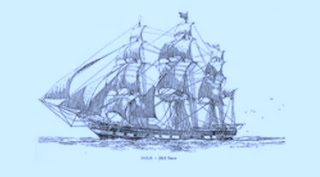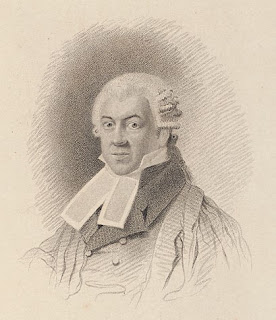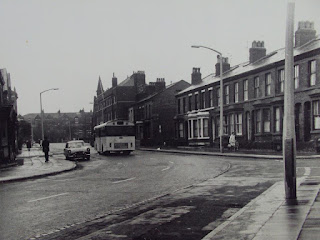In 1856 two men were found guilty of killing a man who was found dead in an entry with a handkerchief tied around his neck. However after being sentenced to death they had their sentences commuted on appeal.
 At 430am on the morning of Wednesday 20th February that year a carter named James Ryan was on his way to tend to his horses in Chisenhale Street. He saw what he thought was a drunk man lying in an entry but he and the stable owner were too afraid to wake him and instead went about their work.
At 430am on the morning of Wednesday 20th February that year a carter named James Ryan was on his way to tend to his horses in Chisenhale Street. He saw what he thought was a drunk man lying in an entry but he and the stable owner were too afraid to wake him and instead went about their work.
About an hour and a half later Robert Hughes, an apprentice tinsmith, was in the entry and saw the man. He felt the pulse and realised that he was dead, and by chance saw a police inspector and six constables in Chisenhale Street about to come off duty.
Inspector Duggan examined the body and found that a handkerchief had been tied very tight around the neck. There were also some items of clothing missing, namely boots, coat and braces. The inspector immediately sent for a surgeon while a constable remained by the deceased man's side.
When Dr Sayers from the North Dispensary examined the body, he was of the opinion that as the handkerchief was double knotted it could not have been an act of suicide. The body was removed to the deadhouse at Princes Dock while detectives immediately began making enquiries in the neighbourhood. This led to the arrest that afternoon of two men, Philip Wall and James Carr, who had been seen by many witnesses with the dead man shortly after midnight. When he was apprehended, Wall was wearing boots that were believed to belong to the deceased, who was identified as a 44 year old local seaman named James House.
The following day an inquest took place before the Coroner Mr P F Curry. After first hearing evidence as to the discovery of the body, a lady called Sarah Brennan was called. She stated that she did not know the victim House, but had seen him a midnight when he was drunk and made a saucy remark to her. Another man then helped him up and then Carr, who she did know, appeared with Wall and the two of them took House down the entry. She swore that House, whose body she had been taken to see in the deadhouse, was the man taken by the two prisoners down the entry.
A woman named Mary Fannin explained that the handkerchief found round House's neck was hers and that she had loaned it to Carr a few weeks previously. Ann Hainsworth, who ran a boarding house in Chisenhale Street, said that Wall had been lodging there about a week and asked her to mind a pawn ticket soon after news of the murder broke. A pawnbrokers assistant then confirmed that Wall had pawned a coat on the Wednesday morning.
Some damning evidence then came from Michael Hannon, who had a clothes shop in Great Howard Street. He said that he sold some boots to House a week or two earlier and that he was wearing them when he called to the shop just hours before he was found dead. On that visit, he commented on the quality of the boots, bought some more articles and said that he now had enough supplies to go away to sea again.
John Bold, whom House boarded with when he was not away at sea, confirmed that on the Tuesday night he had been wearing the coat which had been pawned by Wall. Detectives confirmed that on being arrested, Wall claimed to have been given the boots by a seafaring man three weeks earlier. On being told they had been identified as belonging to House, he said they had been given to him by Carr. When Carr was asked about this, he denied all knowledge whatsoever of the boots.
After all the evidence had been heard Mr Curry asked if the prisoners had anything to say. Carr said that he was drunk and couldn't remember anything while Wall said 'one half of the evidence against me is false.' It took just five minutes for the jury to find that House had died as a result of being wilfully murdered by Carr and Wall, who were committed to the assizes for trial on a coroner's warrant.
On 1st April the two men, who were in their twenties and described themselves as seamen, stood trial for their life before Baron Martin. In opening the case for the prosecution, Mr Apsinall said that the evidence was circumstantial, but when it was all pieced together nobody could be left in any doubt as to how James House met his death.
The first witness called was Mr Bold the lodging house keeper. He restated his evidence of the inquest regarding House's clothing and also that he was sober and had three halfcrowns and two shillings on him at 11pm. The next witness was John Thorn, a victualler from Great Howard Street. He recalled that House had three glasses of wine and some brandy in his premises and was quite tipsy on leaving after midnight. He was accompanied by a woman and said he was joining a ship at Hartlepool the next day, hence his last spree.
The woman who House was with was Jane Hurst, who lived in Chisenhale Street. She described him as 'less than half drunk' and said he walked her home then told her he would be returning to his lodgings. This was at about half past twelve. A police officer called Thomas Newsham then testified that he had seen House, Carr and Wall together on the Chisenhale Street bridge. House was drunk but the other two men said they would look after him and as such Newsham said he had no reason to follow them. Under cross examination Newsham maintained that the drunk man was the same person he had seen at the deadhouse the next day and the two others were the prisoners.
Sarah Brennan repeated her evidence from the inquest about seeing Carr and Wall take House towards an entry, saying he was their shipmate. This evidence was backed up by Christopher Walker, who had seen House fall against some steps after saying something to a woman, who he said may or not have been Sarah. What he could say though was that Carr and Wall helped him up and took him towards the entry.
Another police officer, James Beattie, recalled seeing the three men in Chisenhale Street and on asking what they were doing, Carr replied that their were going to their lodging house. He waited and saw them knock on a door then went away when a woman leaned her head out of the window. Mary Brophy, the keeper of this lodging house said that the three men had come in and enquired about any available women but left after being told that there weren't any.
The carter Ryan and tinsmith Hughes then recalled seeing House on the pavement, not realising he was dead. Inspector Duggan then testified as to confirming that House was dead and sending for Dr Sayers, who stood and repeated his opinion that death was by strangulation and that it could not have been self inflicted. Mary Fannin confirmed that the handkerchief found around Houses neck was hers and that she had loaned it to Carr. Evidence was then given by Mary Laverty, who owned the house where the two prisoners had gone at about 5am. She told how they got up at about 10am and decided to pawn some clothes to get more drink.
Ann Hainsworth repeated her inquest evidence that she had been given a pawn ticket by Wall, with Thomas O'Brien from the pawnbrokers confirming he had given it out along with six shillings for a coat. Three detectives told how the two prisoners were arrested in Waterloo Road after Sarah Brennan had confirmed the body in the deadhouse was that of the man they had been with. Wall was wearing boots that were later identified as House's, while Carr had in his possession some braces and a comb that belonged to the deceased. The last prosecution witness was clothes seller Michael Hannon, who identified the boots Wall had as the ones he had sold to House, in addition to the coat that was pawned.
The counsel for the prisoners contended that the evidence was circumstantial and neither had any motive to kill House. It was suggested that he had been robbed of his money by Jane Hurst and later fell down drunk and died. The witnesses were described as infamous and abandoned, and the opinion of Dr Sayers was simply dismissed out of hand. Even if death was a result of violence, the counsel said there was no evidence to suggest the prisoners did it and that it was unsafe to convict them of murder.
Despite the defence pleas, the jury took forty minutes to find both men guilty of murder, but did make a recommendation for mercy. Prior to donning the black cap the judge said 'I do not see how the jury could have come to any other conclusion but that the unfortunate man House came to his death by your hands.' He then passed the death sentence in the usual form and said he would pass the recommendation on, but not make any comment on it. As he was being led away from the dock, Carr said 'I hope it will be the last the bugger will ever sentence.'
Two weeks later, thanks to their defence barrister Mr McDonnell, the sentences for both men were commuted to transportation for life. On 1st January 1858 both men landed in Western Australia after a three and a half month voyage aboard the Nile.
 Shortly before midnight a lady called, Margaret Cross appeared outside and shouted for Mary Sullivan to come out and fight Margaret Welsh. Sullivan went out and persuaded Cross to come in the house. Once inside Cross was so drunk that she fell over but was helped up by Sullivan, who then pushed her into a room.
Shortly before midnight a lady called, Margaret Cross appeared outside and shouted for Mary Sullivan to come out and fight Margaret Welsh. Sullivan went out and persuaded Cross to come in the house. Once inside Cross was so drunk that she fell over but was helped up by Sullivan, who then pushed her into a room.













